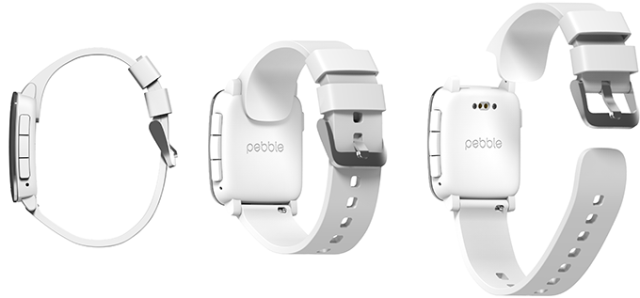
Apparently dissatisfied with the $12 million it had already raised, Pebble today added another watch to its second Kickstarter project. The Pebble Time Steel is an upscale version of the plastic Pebble Time that bumps the battery life from seven to 10 days, bonds the color e-paper display with the top glass to eliminate the air gap, and includes both leather and stainless steel straps. Otherwise, the Time Steel and the plastic Time share the same software and features.
The Pebble Time Steel comes in black, silver, and gold, and it's available to the first 10,000 Kickstarter backers for $250 (as of this writing, there are around 8,000 slots left). It starts shipping to backers in July and will cost $299 when it hits retail. Those who have already backed the plastic Pebble Time can increase their contribution to pay for a Pebble Steel without losing their place in the queue. If they want both watches, there's another, higher donation tier for that as well.

Perhaps more interesting is the announcement of Pebble smartstraps, a way for users to extend the hardware's capabilities beyond what's included in the body of the watch. Pebble says that these straps can add NFC, GPS, larger batteries, car door openers, and other features to either Pebble Time or Pebble Time Steel. Pebble won't be creating its own smartstraps at first, but it's already published some developer documentation to help third parties get started.
reader comments
49